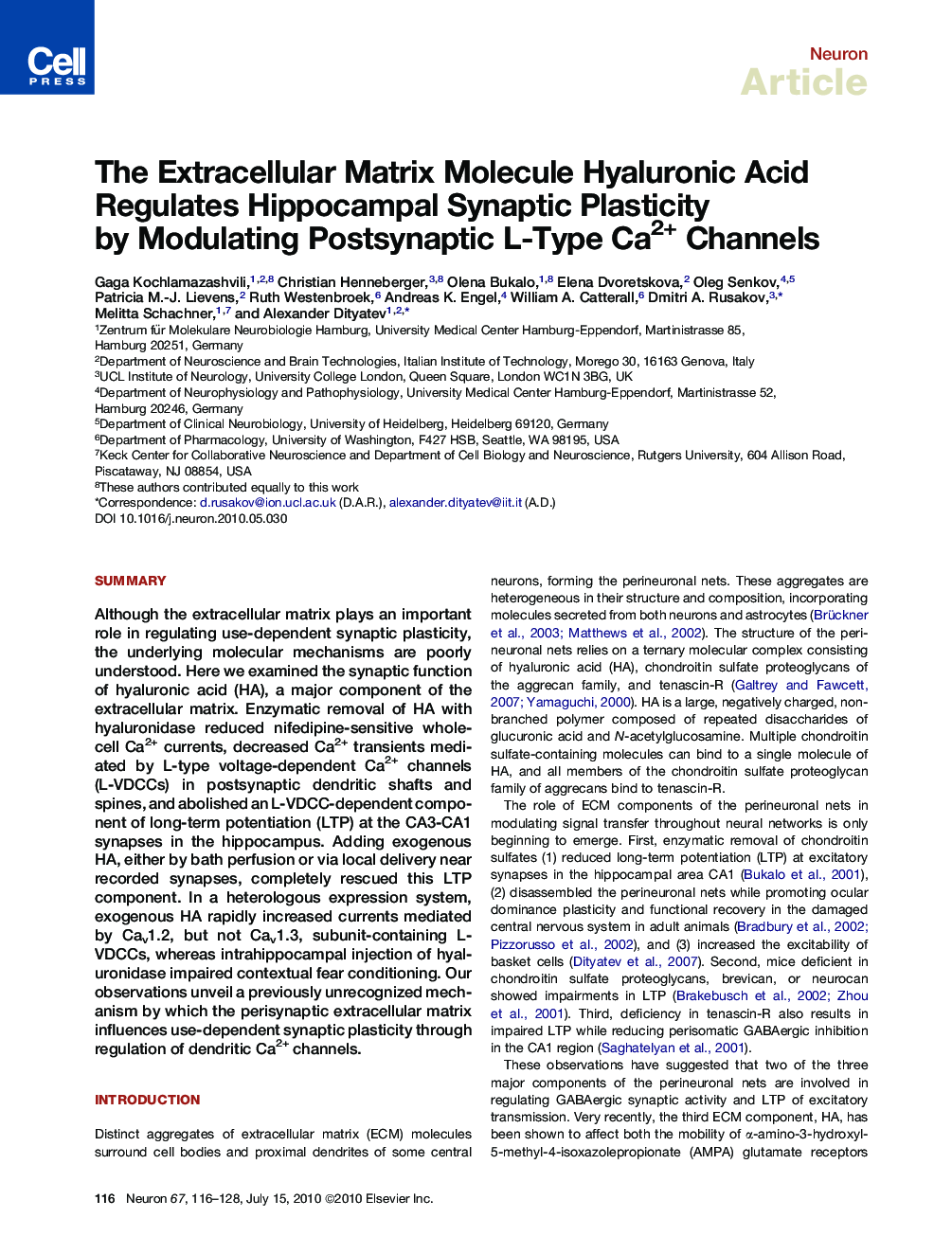| کد مقاله | کد نشریه | سال انتشار | مقاله انگلیسی | نسخه تمام متن |
|---|---|---|---|---|
| 4321880 | 1291659 | 2010 | 13 صفحه PDF | دانلود رایگان |

SummaryAlthough the extracellular matrix plays an important role in regulating use-dependent synaptic plasticity, the underlying molecular mechanisms are poorly understood. Here we examined the synaptic function of hyaluronic acid (HA), a major component of the extracellular matrix. Enzymatic removal of HA with hyaluronidase reduced nifedipine-sensitive whole-cell Ca2+ currents, decreased Ca2+ transients mediated by L-type voltage-dependent Ca2+ channels (L-VDCCs) in postsynaptic dendritic shafts and spines, and abolished an L-VDCC-dependent component of long-term potentiation (LTP) at the CA3-CA1 synapses in the hippocampus. Adding exogenous HA, either by bath perfusion or via local delivery near recorded synapses, completely rescued this LTP component. In a heterologous expression system, exogenous HA rapidly increased currents mediated by Cav1.2, but not Cav1.3, subunit-containing L-VDCCs, whereas intrahippocampal injection of hyaluronidase impaired contextual fear conditioning. Our observations unveil a previously unrecognized mechanism by which the perisynaptic extracellular matrix influences use-dependent synaptic plasticity through regulation of dendritic Ca2+ channels.
► Hyaluronic acid is important for L-VDCC-dependent forms of LTP in the hippocampus
► Removal of hyaluronic acid suppresses postsynaptic L-VDCC-mediated calcium signals
► Hyaluronic acid potentiates Cav1.2 but not Cav1.3 L-VDCCs
► Injection of hyaluronidase in the hippocampus impairs contextual fear conditioning
Journal: - Volume 67, Issue 1, 15 July 2010, Pages 116–128